Saturday Commentary and Review #173
Sanctions Overuse, US Navy Falling Behind in Vessel Production, Colour Revolution in Bangladesh?, The Sahel, Gold, Terror, Wagner, and More, Oetzi the Anatolian
Every weekend (almost) I share five articles/essays/reports with you. I select these over the course of the week because they are either insightful, informative, interesting, important, or a combination of the above.
Carrots and Sticks.
This is the most tried and trusted method to encourage good behaviour from children all the way through to states. Encourage good behaviour by offering up rewards, and threaten to punish bad behaviour with penalties. Simple as.
In international affairs, the ultimate stick is warfare, but warfare can be a) messy, b) unpopular, and worst of all c) unpredictable. Thankfully, the threat of war is not the only stick available to those practicing statecraft. There is a an option that is much less messy, unpopular, and unpredictable stick than warfare, and that is sanctions.
For a long, long time sanctions regimes were quite rare. Up until less than two decades ago, I can only recall those levied against Cuba, Saddam’s Iraq, and the one applied to Slobodan Milosevic’s Rump Yugoslavia1. These were extraordinary cases in which warfare on the part of the USA was rejected, and sanctions would take their place. Only the biggest of the “baddies” were targeted, with the lingering threat of actual war never too far behind.
The Post-9/11 world is an entirely matter altogether, as sanctions have become the “go-to” tool to punish “evil-doers”…at least officially. The fact of the matter is that sanctions on the part of the USA have proliferated since then, and are now approaching exponential figures. I have been waiting for some time for some media/think tank outlet to do a deep dive on the massive expansion of the many, many US sanctions regime now in place across the globe, and WaPo has done us the favour of doing so. WaPo being WaPo does play favourites and does engage in a bit of subtle cheerleading, but I am certain that my readership is able to recognize these instances and discard those biases in order to separate the wheat from the chaff and extract the value that has been provided. This is a content-rich report, so I will stick to excerpting and focus less on commentary:
Today, the United States imposes three times as many sanctions as any other country or international body, targeting a third of all nations with some kind of financial penalty on people, properties or organizations. They have become an almost reflexive weapon in perpetual economic warfare, and their overuse is recognized at the highest levels of government. But American presidents find the tool increasingly irresistible.
By cutting their targets off from the Western financial system, sanctions can crush national industries, erase personal fortunes and upset the balance of political power in troublesome regimes — all without putting a single American soldier in harm’s way.
Sanctions are both:
a testament to the strength of the US power today
an excellent example of how the US is in empire-management mode
In Washington, the swell of sanctions has spawned a multibillion-dollar industry. Foreign governments and multinational corporations spend exorbitant sums to influence the system, while white-shoe law firms and K Street lobbying shops have built booming sanctions practices — in part by luring government officials to cash in on their expertise.
Elsewhere, sanctions have pushed autocratic regimes into black market trade, empowering criminal networks and gangs of smugglers. U.S. adversaries are ramping up their efforts to work together to circumvent the financial penalties. And like military action, economic warfare can leave collateral damage: Sanctions on Venezuela, for instance, contributed to an economic contraction roughly three times as large as that caused by the Great Depression in the United States.
It’s absolutely wild how the Yanks are able to turn anything into an opportunity to make money, and even sanctions regimes are no exception: a new class of lobbyists now exists on Capitol Hill entirely thanks to this tool. Incredible.
Alarm about sanctions’ rise has reached the highest levels of the U.S. government: Some senior administration officials have told President Biden directly that overuse of sanctions risks making the tool less valuable. And yet, despite recognition that the volume of sanctions may be excessive, U.S. officials tend to see each individual action as justified, making it hard to stop the trend. The United States is imposing sanctions at a record-setting pace again this year, with more than 60 percent of all low-income countries now under some form of financial penalty, according to a Washington Post analysis.
“It is the only thing between diplomacy and war and as such has become the most important foreign policy tool in the U.S. arsenal,” said Bill Reinsch, a former Commerce Department official and now the Scholl chair in international business at the Center for Strategic and International Studies, a Washington-based think tank.
“And yet,” Reinsch said, “nobody in government is sure this whole strategy is even working.”
Its use shows that you are “doing something”, and in a news cycle where attention spans are increasingly short, that is good currency.
This following part is key:
At the same time, with the collapse of the Soviet Union, the United States was emerging as the world’s unrivaled superpower, both financially and militarily. Governments and banks around the world were dependent on the U.S. dollar, which remains the dominant currency on Earth.
Today, the dollar buys access to the American economy but also undergirds international trade even when there is no connection to an American bank or business. Commodities like oil are priced globally against the greenback, and countries trading in their own currencies rely on dollars to complete international transactions.
That financial supremacy creates a risk for U.S. adversaries and even some allies. To deal in dollars, financial institutions must often borrow, however temporarily, from U.S. counterparts and comply with the rules of the U.S. government. That makes the Treasury Department, which regulates the U.S. financial system, the gatekeeper to the world’s banking operations.
And sanctions are the gate.
Treasury officials can impose sanctions on any foreign person, firm or government they deem to be a threat to the U.S. economy, foreign policy or national security. There’s no requirement to accuse, much less convict, anyone of a specific crime. But the move makes it a crime to transact with the sanctioned party.
Coming under U.S. sanctions amounts to an indefinite ban from much of the global economy.
In a unipolar world, the USA has the ability to make “evil doers” outlaws in the global economy. That’s why there is a push to create alternative systems outside of the US-controlled system, but that is nowhere as easy as it sounds.
The US Treasury Department is at the heart of this world:
All that changed after the terrorist attacks of Sept. 11, 2001. Congress enacted legislation to compel financial institutions to maintain records of consumer transactions and hand them over to law enforcement. Suddenly, U.S. officials had volumes of information on the world’s banking customers, just as the rise of digital banking gave new insights into the worldwide flow of money.
As the Treasury Department became a key player in the global war on terrorism, U.S. policymakers began to understand the power of the nation’s financial hegemony. Experts urged a more sophisticated approach than the blunt embargo used in Iraq. “Smart sanctions,” these advocates hoped, would be more precise, applying maximum pressure by cutting off only malicious actors.
Proliferation:
The playbook soon shifted to include bigger targets and more aggressive enforcement. In 2010, President Barack Obama worked with Congress to approve sanctions designed to force Iran to give up its nuclear ambitions. The Justice Department began levying billions of dollars in fines on Western banks that defied Treasury prohibitions.
These sanctions applied not just to Iran, but also to firms trading with Iran, undercutting Tehran’s links to international markets. Iranian leaders buckled, deciding to seek a nuclear deal that promised an end to financial isolation.
This display of power led to fresh demand. By Obama’s second term, sanctions had been imposed on a growing list that included military officials in the Democratic Republic of Congo, suppliers of the Yemeni military, Libyan officials connected to Moammar Gaddafi and — after a brutal crackdown on civilian protesters in Syria — President Bashar al-Assad.
more:
Treasury aides who had once labored in obscurity took recommendations directly to Cabinet officials, who were simultaneously hearing from alarmed Fortune 500 CEOs and the heads of Wall Street banks. Sanctions were suddenly a key feature in the reemerging “great power” competition among Washington, Beijing and Moscow.
“You’d get requests and comments from seemingly every corner of the government: ‘Why have you not imposed sanctions on these people? And what about those people?’” said Adam M. Smith, who served as senior adviser to OFAC and director for multilateral affairs on the National Security Council during the Obama administration.
“Regardless if you were a Democrat or a Republican, the thought process was always: Why would you not continue to do this?” Smith said.
Why not use this powerful tool for your benefit?
Here’s one reason:
A more existential challenge emerged, as well: The power of sanctions lay in denying foreign actors access to the dollar. But if sanctions make it risky to depend on dollars, nations may find other ways to trade — allowing them to dodge U.S. penalties entirely.
In March 2016, Obama Treasury Secretary Jack Lew warned publicly of “sanctions overreach” and the risk that their “overuse could ultimately reduce our capability to use sanctions effectively.”
The part in which WaPo praises the Biden Regime, but with a caveat:
The Biden administration has taken steps to mitigate unintended consequences. Last year, Treasury announced it had hired economists to staff a new division analyzing the economic impact of sanctions. Humanitarian groups have praised Biden administration efforts to ensure that critical medical supplies and food can enter countries under sanctions. And some of critics’ worst fears have not materialized: The dollar remains the world’s top reserve currency, at least for now.
“Sanctions are an important tool that can help promote our national security, but they should only be used as part of a broader foreign policy strategy,” Deputy Treasury Secretary Wally Adeyemo said in a statement. “The 2021 Treasury Sanctions Review has provided a useful road map to help us refine the use of this important tool.”
But other problems appear to be getting worse. Current and former U.S. officials describe OFAC’s workload as overwhelming, the agency inundated with tens of thousands of requests from the private sector. Some White House officials have outsourced national security questions to nonprofits, as they brainstormed scenarios in which sanctions would have to be massively ramped up to confront U.S. adversaries, according to two people familiar with the matter, who spoke on the condition of anonymity to describe internal talks.
Sanctioning foreign actors has become reflexive in Washington no matter who is in office. At some point the various overlapping regimes will have a negative impact of US business and finance, and could potentially threaten the primacy of the US Dollar.
One data point that works in favour of American Declinism is the US Navy’s inability to not just keep up with the Chinese in terms of the production of ships, but to also maintain its own production output. Many lightly-armed littoral combat ships have been retired, for example, with nothing to replace them.
These production setbacks have been pointed out to me, with one mutual on Twitter/X reiterating the point so that I get it (I do!). This is an actual problem that requires solving, and fast. It is partially to blame for the Americans effectively ceding the Red Sea to the Houthis (for now).
AP has done a partial deep-dive (horrible language here, I apologize) on this issue:
The labor shortage is one of myriad challenges that have led to backlogs in ship production and maintenance at a time when the Navy faces expanding global threats. Combined with shifting defense priorities, last-minute design changes and cost overruns, it has put the U.S. behind China in the number of ships at its disposal — and the gap is widening.
Navy shipbuilding is currently in “a terrible state” — the worst in a quarter century, says Eric Labs, a longtime naval analyst at the Congressional Budget Office. “I feel alarmed,” he said. “I don’t see a fast, easy way to get out of this problem. It’s taken us a long time to get into it.”
Marinette Marine is under contract to build six guided-missile frigates — the Navy’s newest surface warships — with options to build four more. But it only has enough workers to produce one frigate a year, according to Labs.
A lot of the guys who know how to do this work are retiring or have already retired. Sound familiar?
One of the industry’s chief problems is the struggle to hire and retain laborers for the challenging work of building new ships as graying veterans retire, taking decades of experience with them.
Shipyards across the country have created training academies and partnered with technical colleges to provide workers with the skills they need to construct high-tech warships. Submarine builders and the Navy formed an alliance to promote manufacturing careers, and shipyards are offering perks to retain workers once they’re hired.
Andreini trained for his job at Marinette through a program at Northeast Wisconsin Technical College. Prior to that, he spent several years as a production line welder, making components for garbage trucks. He said some of his buddies are held back by the stigma that shipbuilding is a “crappy work environment, and it’s unsafe.”
The problem:
Much of the blame for U.S. shipbuilding’s current woes lies with the Navy, which frequently changes requirements, requests upgrades and tweaks designs after shipbuilders have begun construction.
That’s seen in cost overruns, technological challenges and delays in the Navy’s newest aircraft carrier, the USS Ford; the spiking of a gun system for a stealth destroyer program after its rocket-assisted projectiles became too costly; and the early retirement of some of the Navy’s lightly armored littoral combat ships, which were prone to breaking down.
The Navy vowed to learn from those past lessons with the new frigates they are building at Marinette Marine. The frigates are prized because they’re less costly to produce than larger destroyers but have similar weapon systems.
Now check this out:
The Navy chose a ship design already in use by navies in France and Italy instead of starting from scratch. The idea was that 15% of the vessel would be updated to meet U.S. Navy specifications, while 85% would remain unchanged, reducing costs and speeding construction.
Instead, the opposite happened: The Navy redesigned 85% of the ship, resulting in cost increases and construction delays, said Bryan Clark, an analyst at the Washington-based think tank Hudson Institute. Construction of the first-in-class Constellation warship, which began in August 2022, is now three years behind schedule, with delivery pushed back to 2029.
The final design still isn’t completed.
Shifting threats:
Throughout its history, the Navy has had to adapt to varying perils, whether it be the Cold War of past decades or current threats including war in the Middle East, growing competition from Chinese and Russian navies, piracy off the coast of Somalia and persistent attacks on commercial ships by Houthi rebels in Yemen.
And that’s not all. The consolidation of shipyards and funding uncertainties have disrupted the cadence of ship construction and stymied long-term investments and planning, says Matthew Paxton of the Shipbuilders Council of America, a national trade association.
“We’ve been dealing with inconsistent shipbuilding plans for years,” Paxton said. “When we finally start ramping up, the Navy is shocked that we lost members of our workforce.”
How is the US Navy supposed to protect Taiwan from a potential Chinese invasion?
The overthrow of the Prime Minister of Bangladesh two weeks ago has almost entirely flown under the radar. Sheikh Hasina had to flee her official residence to find a safe haven on the outskirts of the Indian capital of Delhi. It was an ignominious end to 15 years of rule that did deliver benefits to Bengalis, but also did see the PM become more autocratic over time.
Her ousting was the result of massive student protests stemming from the “surprise court rejection of the jobs quota for descendants of freedom fighters”. This issue was considered a minor one, but the opposite occurred: huge student demonstrations broke out, and the military refused to shoot at the protesting students. Emboldened by this refusal, the demonstrations swelled and the army could no longer guarantee Hasina’s physical safety.
Bangladesh is a dark spot on the map for most of us westerners, but it is a country of some 175 million people surrounded by India and not too far from China. This makes it important, and its importance will continue to grow as global events continue to shift to East Asia. Chan Akya senses the dark hand of US regime change ops in this coup d’etat, but concedes that proof is very thin (he wrote this piece 72 hours after Hasina fled to India):
Indian intelligence agencies, rarely the epitome of self-assured success, have rarely been caught as flat-footed as they were over the weekend when Bangladesh’s Prime Minister Sheikh Hasina hurriedly evacuated her palatial residences for a rather modest government guest house on the outskirts of Delhi.
In a matter of a few hours, the former “Iron Lady” of Dhaka found her position, and perhaps prospects for her life itself, quite unviable, when the head of the armed forces (who happened to be her niece’s husband) communicated the troops’ refusal to fire at “student” protestors who were gathering in force across the country.
Adding salt to the injury, various democracies such as the United States and the United Kingdom refused or revoked her visa after the events that brought former Grameen Bank chief and Nobel prize winner Muhammad Yunus to power as interim prime minister.
The author sees the hand of the USA:
In particular, the hand of the US government is discernible in the rapid unraveling of events since the middle of June when student protests around a new job quota system of descendants of the country’s freedom struggle soon erupted into broader protests by a population that had grown increasingly sick of high inflation and high unemployment of educated young people.
In line with the toolkit used in the “Spring Revolution” countries ranging from Tunisia to Egypt, mass simultaneous protests erupted around Bangladesh with acts of violence targeting only minorities (considered closer politically to Hasina’s Awami League party).
The police and the army were called to help but proved utterly ineffective against the humongous mobs gathered. Despite various incidents of tear gassing and even shoot-at-sight orders (which were hardly carried out in practice as police preferred to fire in the air rather than at protestors directly), emboldened mobs had threatened to march on the capital this week, prompting Hasina’s ignominious exit.
Why would the USA bother?
Given the country’s relatively small geographical presence that belies its population and its lack of substantial resources, the primary question for any reader would be why the US would even bother to trigger a coup in the country.
The answer lies in the country’s location, in the strategic eastern part of India with significant proximity to China. That is not all – being essentially a riparian state serviced by two of the world’s biggest rivers, the Ganges and the Brahmaputra, which together form one of the world’s most fertile deltas (explaining the population density) – the country’s ports have long attracted naval powers ranging from the British, Japanese and Russians, to more recently the Chinese and Americans at different points in time.
At the moment, the primary US interest in the country is to establish a service port for mid-size US naval vessels that could help America manage naval operation risks caused by China’s access to ports in neighboring Myanmar and offer logistic services to friendly powers in the region without needing any approval or participation from India.
To be sure, over the longer term, there is a significant strategic geopolitical advantage to be garnered from taming and managing the riparian economy of Bangladesh, with the northern parts of the country offering perfect topography for aerial incursions into the soft underbelly of China to the southeast of the Tibetan-Sichuan region, an area that China has ruled to the point of being entirely complacent about potential military risks.
What makes it a “colour revolution”?
Events in Bangladesh do roughly fall in line with the examples of various color revolutions in Europe and the “Spring” movements in that:
Mass protests triggered by a specific issue that the host government would normally have considered a minor, niche item
Active participation of multiple social groups, usually led by younger people but soon spreading across society to hitherto unpolitical groups
Significant use of technology, in particular secure communication apps (which may or may not have been assisted by a foreign state actor to ensure encryption upgrades beyond the host country’s ability to monitor or disrupt)
Generous and unexplained funding, usually emanating from new bank accounts of recently established charities and NGOs
Random news designed to incite more participants and in particular the use of graphic images of rape involving young women and images or videos of authority figures causing grievous bodily harm or even dismembering human bodies.
From what this writer has reviewed as raw data over the past 72 hours, a number of these conditions have been met, although it has thus far proved impossible to corroborate or prove much of the information to the typical standards of evidence-based documentation.
The rising threat of Jamaat-e-Islami, an Islamist group that is happy to use violence to get it way:
Ruling since 2009, Hasina had indeed become much more dictatorial and had taken extreme action against the Bangladesh National Party of her bete noire and former political partner Khaleda Zia (the two had ganged up to bring down President Ershad in 1990), along with her ongoing crackdown on fringe terrorist movements that operated under the general umbrella of the Jamaat-e-Islami (Jamaat).
…and suspicions of them playing alongside the USA:
US actions have in particular been very telling. From decrying the Bangladesh elections earlier this year as “not free and fair” to an official statement “welcoming the interim Dhaka government” in a matter of hours after Hasina fled the country, there’s an American fingerprint discernible in every direction.
It is no secret that a number of pro-Palestine members of the US government had common cause with the Jamaat, and certainly benefited from funding and lobbying support among the small but influential Bangladeshi-American community, particularly on the East and West coasts of America.
There were also regular meetings between US officials and Tariq Rahman, son of Khaleda Zia and de-facto head of the BNP, over the past few months. It is believed that a number of UK Labour politicians who depend on the Bangladeshi vote lobbied the Biden government regularly on behalf of the BNP.
Conspiracy:
From whatever I have pieced together, it appears that adequate funding has been provided to the Jamaat-linked individuals operating in Bengal since at least last year and there had been some speculation that the US had funded a number of Islamist politicians who stood (and mostly won) during the Indian elections, opposing the candidates of India’s ruling BJP.
That may have been the case, and incidents where entire villages failed to cast a single vote for the BJP that may highlight the munificence of the Jamaat in Bengal did indeed occur, but largely it seems to me that the money was sent into Bangladesh.
As a side note, while Bangladesh has its own currency, it is generally believed that the Indian rupee operates like legal tender in many parts of the economy, much like the US dollar does globally. Therefore, funding of Jamaat accounts in India would provide a frictionless transmission of funds to activists in Bangladesh.
The surprise court rejection of the jobs quota for descendants of freedom fighters, a founding myth of the Awami League, is now itself being considered through conspiratorial lenses, with some “well-informed sources” suggesting that the judges who helped to pass the order all have significant US nexus including children living or studying in the country.
I cannot vouch for any of this, but it does seem plausible as the show moves to East Asia.
The Sahel is defined as the portion of North Africa that was once ruled by the French south of the northern strip along the Mediterranean coast. Burkina Faso, Chad, Mauritania, Mali and Niger are considered the core of the Sahel, with the extended version going on to include Cameroon, Guinea, Gambia, Nigeria and Senegal.
The French have been expelled from The Sahel over the past decade, as country after country saw their government overthrown in military rebellions. These armies were not happy with the perceived lack of French support in fighting the many Islamist rebels that spread throughout these countries, including AQIM (al-Qaida in the Maghreb). Instead, they turned toward Russia, and specifically the Wagner Group, to not only fight the Islamists, but to also protect their main source of income for their governments; the extraction of natural resources.
This very, very long read has it all: coups, Islamist terrorists, Wagner, Gold mines (and other resources), ethnic sectarianism, colonial hangovers, a changing climate, and more. It’s the resources of this region combined with its proximity to Europe that make it so important for us to understand. I’ll excerpt some parts of this essay and leave the rest for you to read.
We left the vicinity of Néma, Mauritania, and rode south through dunes and acacias toward the border with Mali. It was long into the winter dry season, and we moved between isolated watering points, where nomads came with their herds of camels, goats, and sheep. The war that raged on the other side of the border had begun in Mauritania, before spreading south and coming to color every part of life in the region known as the Sahel – a name that, in common parlance, denotes a cluster of former French colonies in the northern interior of Africa: Mauritania and Chad at the edges, and Mali, Burkina Faso, and Niger in what is often referred to as the ‘central Sahel’. In a decade of fighting focused in this central Sahel, transnational Islamist groups built shadow systems of power – drawing recruits and funds by controlling gold mines and villages inhabited above all by the cattle-herding Peul people, fighting by ambush and dispersing when confronted by government or international troops. In January this year, the UN Secretary General António Guterres gave a speech warning that the region had become the world’s ‘epicenter of terrorism’, and that it was facing an ‘an all-out assault on civilization itself’.
Mauritania as an “oasis” in the Sahel:
The war was fought mostly between central authorities and the sons of nomads. But few people in Mauritania are more than a generation or two away from having been nomads themselves. The méharistes – the camel cavalry – carried small arms and barely enough ammunition for a firefight. But they have developed their own way of fighting the insurgency that has outlasted four international deployments and the military power of half a dozen African governments. It is a soft-touch approach, and goes some way in explaining the mystery of how Mauritania, nearly alone in the region, has managed to achieve a tenuous peace. They cultivate spies. They control the watering points and watch who uses the passes in the high country. They move on the ground, and speak with the women whose sisters have married jihadists and the old men who can point them to the arms caches and smuggling routes.
A short ride to the east of us, thousands of refugees a day were crossing over from Mali toward camps and watering-places near M’bera. The city of Kidal, the ‘historic fief’ of the Tuareg, who in 2012 rose up to take control of northern Mali, was recovered last November by the Malian army and their Russian allies. For at least a few hours, the death’s-head flag of the mercenary Wagner Group flew over the city’s colonial-era fort. The soldiers with us had all seen the photo. At night around the campfire, they talked earnestly about what it portended.
Mauritania has become an uneasy haven from the upheaval that has been ‘shredding the social fabric’ of the Sahel, as Guterres put it. The once-sleepy capital of Nouakchott is booming, a refuge for agents of armed groups, and the locus of geopolitical competition. why everyone is courting mauritania ran a September headline in Foreign Policy. ‘NATO, China, Russia, and regional powers all want closer ties.’ Migrants from war-torn countries like Mali and Sudan have come by the tens of thousands to prospect for gold in Mauritania’s deserts, much of which would be smuggled to refineries in Dubai.
‘There,’ M’bérik pointed northeast, toward the trackless frontier inhabited only by gold prospectors, smugglers, and nomads. ‘It is plein désert,’ – the full desert. ‘We go nine days to places no 4×4 can go. No one has a compass. No one has a GPS.’ Many Mauritanians consider it vaguely shameful to rely on maps or devices to navigate the desert. ‘And there are many mean people there.’
I asked him how they didn’t get lost. ‘Monsieur James,’ he chided me. ‘Nous sommes les gens du terrain.’
Maintaining order in light of the presence of the AQIM:
Every empire has its ways of keeping order at its fringes. The Americans living those days in Mauritania arrived in the spring. They were taciturn pilots who landed in Beechcraft King Airs, planes that the Canadian pilots I worked with noted were the same kind that US law enforcement agencies use to monitor smugglers in the lake-strewn borderlands where Ontario, New York State, and the Iroquois reservations come together. It was a safe bet that the men were there to make surveillance flights, helping the Mauritanian military search for smugglers and fighters in what was then a force of about one thousand or so members of a newly formed franchise known as al-Qaeda in the Islamic Maghreb (AQIM).
The leadership of AQIM came from an elite of ethnic Arabs, most of them veterans of the civil war that began in Algeria in the early 1990s. They grew powerful and rich by smuggling drugs, guns, and cigarettes along the traditional trans-Saharan routes linking sub-Saharan Africa to the Mediterranean. The commander of the group’s operations in Mauritania, an Algerian named Mokhtar Belmokhtar, became internationally famous under the nom-de-trafic Mister Marlboro.
Shortly before I got to Mauritania, a young ex-gangster named Sidi Ould Sidna orchestrated the kidnapping and beheading of four French tourists in the southern town of Aleg. A few weeks into my time in Zouérat, I traveled overland to the capital. When I got to the hotel I’d reserved I found shrapnel and burning thatch in the courtyard. A small Volkswagen parked outside had been positively aerated by gunfire. I had missed the assault by a few hours.
This attack was claimed by AQIM, which was earning tens of millions of dollars a year by kidnaping and ransoming Westerners. Sometimes smugglers in caravans would fire small arms at our planes, which flew at low altitudes making large survey maps showing what are known as anomalies – areas where magnetic or gravimetric readings indicate propitious areas to drill and sample. It was the first step in the long and expensive path toward mining development.
More on Mauritania as an oasis of calm:
The country I arrived in last December was not the Mauritania I remembered. It was in the midst of an upheaval that had transfigured the whole society. The change was part of a chain reaction that had been set off when France, in 2011, had pushed for the NATO bombing campaign that drove Muammar Gaddafi from power in Libya. Gaddafi had offered training and refuge to Tuareg rebels from the north of Mali. After he fell, the Tuareg retrieved thousands of small arms and heavy weaponry such as SA-7 mobile rocket launchers from Libyan weapons caches, and joined in a brief but consequential alliance with al-Qaeda, which had always wanted a regional war. ‘Back then I was on the dark web all the time,’ Rudy Attalah, who had been George W. Bush’s head of counterterrorism in Africa and now runs a think tank, told me. ‘And there was this map they shared, with black arrows all pointing directly to Bamako. They said, if Mali falls, all of West Africa will fall.’ The alliance swept toward Bamako, and French troops intervened, in what became a deployment that would span three countries and last eight years.
The jihadist campaign in Mauritania had by this point become a part of life in the country. In the summer of 2009, AQIM murdered an American aid worker and carried out a suicide attack on the French Embassy in Nouakchott. A year earlier they targeted the vital iron mines and ambushed and killed twelve soldiers near Zouérat. They attacked the military barracks at Néma, and in 2011 they tried to assassinate President Mohamed Ould Abdel Aziz, who took power in a coup shortly after I left the country. And then everything went quiet.
‘Various explanations were proffered,’ an intelligence brief by an American security consultant explained, about the mysterious and sudden peace that emerged. ‘Mauritania was good at counterterrorism; the government had made a deal with the devil; jihadi groups respected Mauritania’s neutrality.’
The truth may be a combination of all three. In 2016, American officials declassified a letter from 2010, found with Osama Bin Laden when US Navy Seals killed him at his secret compound in Pakistan. It discussed a possible truce with Mauritanian authorities, provided they pay ‘between ten to twenty million euros’ a year and agree to ‘not intercept the Mujahidin and cause any evil in the country’.
Even if there wasn’t an official deal, Mauritania found some arrangement that led the jihadists to turn their attention elsewhere. ‘It wasn’t that there were these attacks and our military did this great fighting,’ Yahya Loud, an Islamist opposition parliamentarian told me when I got to Nouakchott. ‘They just stopped.’ The country turned toward the Arab world, and Abdel Aziz oversaw an Islamicization of public life. ‘The average Mauritanian is already an extremist in their interpretation of Islam,’ Loud laughed. ‘They don’t see us as the enemy.’
The Russians:
I drove out with Beyrouk to see the newly-constructed camel corrals on the edge of town. I asked him, given that he was management at the SNIM, about a rumor I had heard from Ely. He’d said he’d heard talk of a Russian-operated gold mine, far out into the desert near the Algerian border. I had thought this was implausible, but Beyrouk knew what I was talking about.
‘Oh yeah, that’s at the border,’ he said. ‘It’s top,’ he said, pronouncing the word in English. I didn’t understand what he meant. ‘It’s top-secret,’ he said. ‘We say top here, like James Bond.’
I asked what he thought the Russians were doing out there.
‘I think it’s an exchange, they offer guns and arms,’ he said. ‘There’s an exchange like that. We never know,’ he said. ‘You can’t get near it. I went there and they said you can’t come near. But there are Russians.’
This is by far one of the best essays that I have read this year.
We end this weekend’s SCR with a fresh look at our favourite Ice Man, Oetzi:
Ötzi, the 5,300-year-old mummy found murdered high in the Alps with an arrow in his back, is a prehistoric celebrity who attracts 300,000 visitors a year to his custom cooling chamber in the South Tyrol Museum of Archaeology in Bolzano, Italy. Years of studies have revealed much about the Iceman, from his last meal—dried ibex and deer meat with einkorn wheat—to the distant Tuscan origins of his copper ax. But while the wizened mummy is extraordinarily well preserved for its age, it gives little impression of how Ötzi would have appeared in life. Now, a detailed genetic study has revealed much more about what the Iceman looked like—and traces the Copper Age corpse’s ancestral lineage back to Anatolia, an area that is now the Asian portion of Turkey.
Scientists have newly sequenced Ötzi’s genome a decade after an earlier effort, using modern techniques and comparative data to produce a much higher-quality result than ever before. The study published Wednesday in Cell Genomics reveals that Ötzi had dark eyes and skin pigmentation darker than that commonly seen among modern inhabitants of Greece or Sicily, though he’s previously been depicted with lighter skin more akin to that of Europeans living in the Alps today. And contrary to most artists’ interpretations, it also appears that he suffered from an age-old affliction still troublesome today—he was going bald.
The study also used comparisons with other ancient individuals’ DNA to suggest that the Iceman is descended, in large part, from the Anatolian agriculturalists who first brought farming to Europe about 9,000 years ago, through what is now Turkey into Greece and the Balkan Peninsula. Ötzi’s genes show little mixing with the hunter-gatherer populations already living in Europe during that time, suggesting that his community was small and relatively isolated in their beautiful but remote alpine environment.
Click here to read the rest.
Thank you once again for checking out my Substack. Hit the like button at the top or the bottom of this page to like this entry, and use the share and/or res-stack buttons to share this across social media. Leave a comment below if the mood strikes you to do so. And don’t forget to subscribe if you haven’t done so already.
And don’t forget to join me on Substack Notes!
I will confess to being largely ignorant of the long-running sanctions regime against the DPRK…an oversight on my part




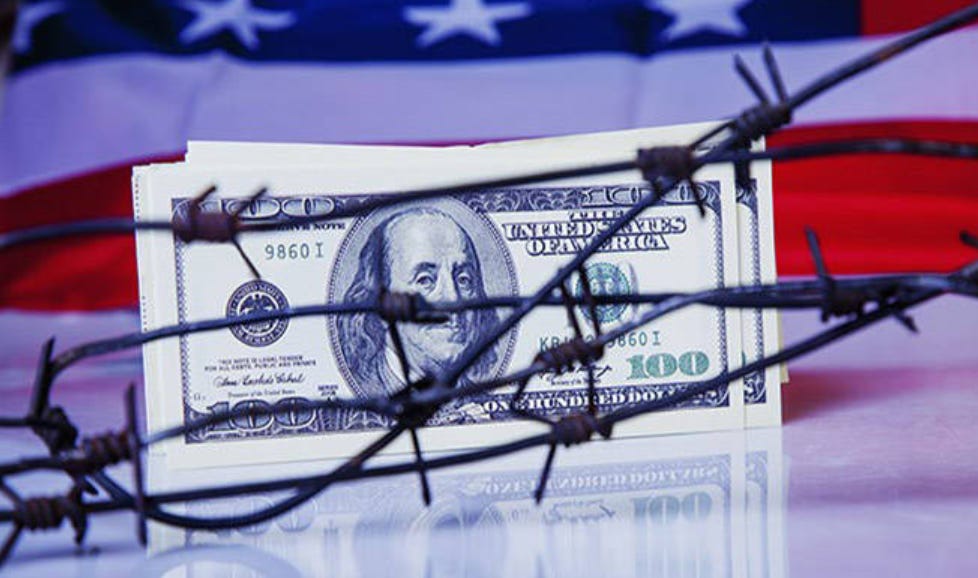
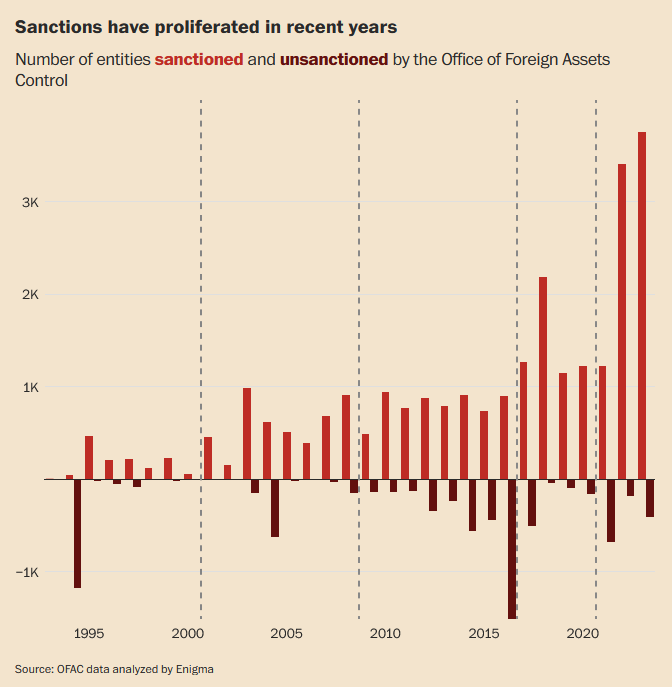
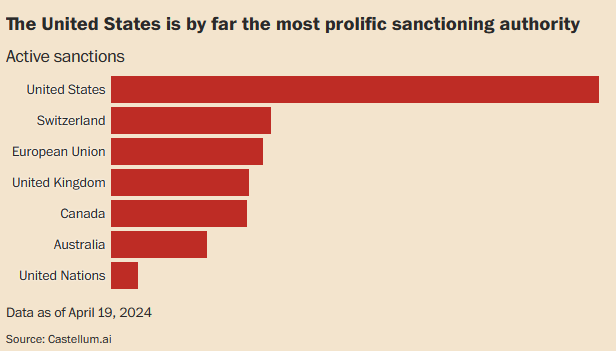
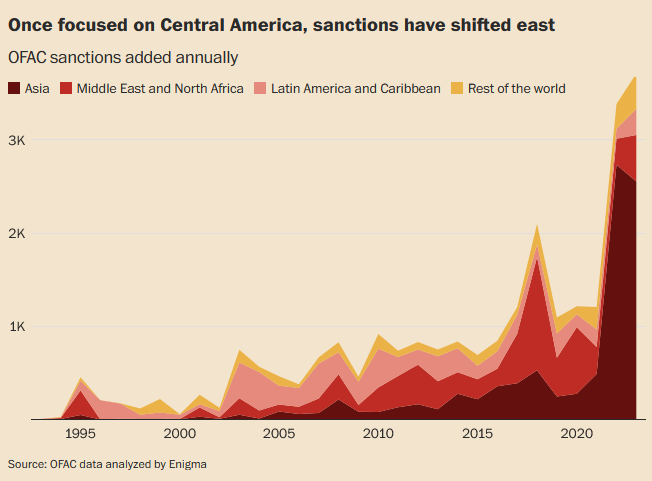

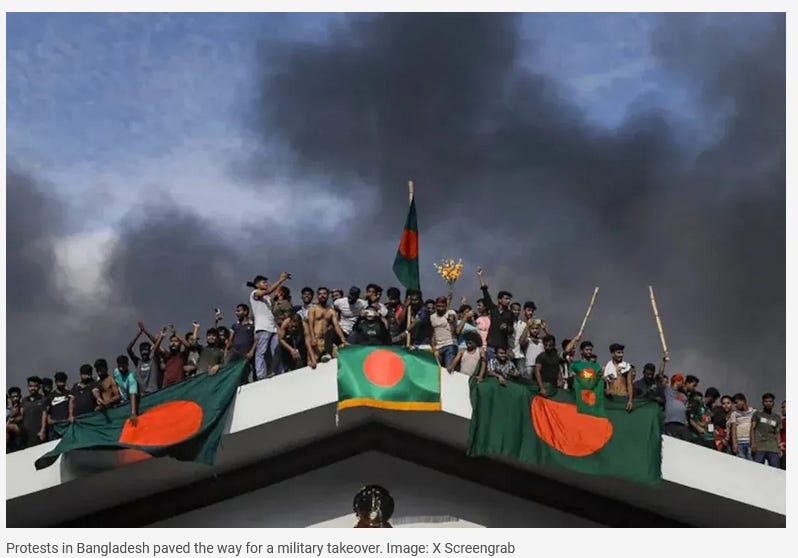
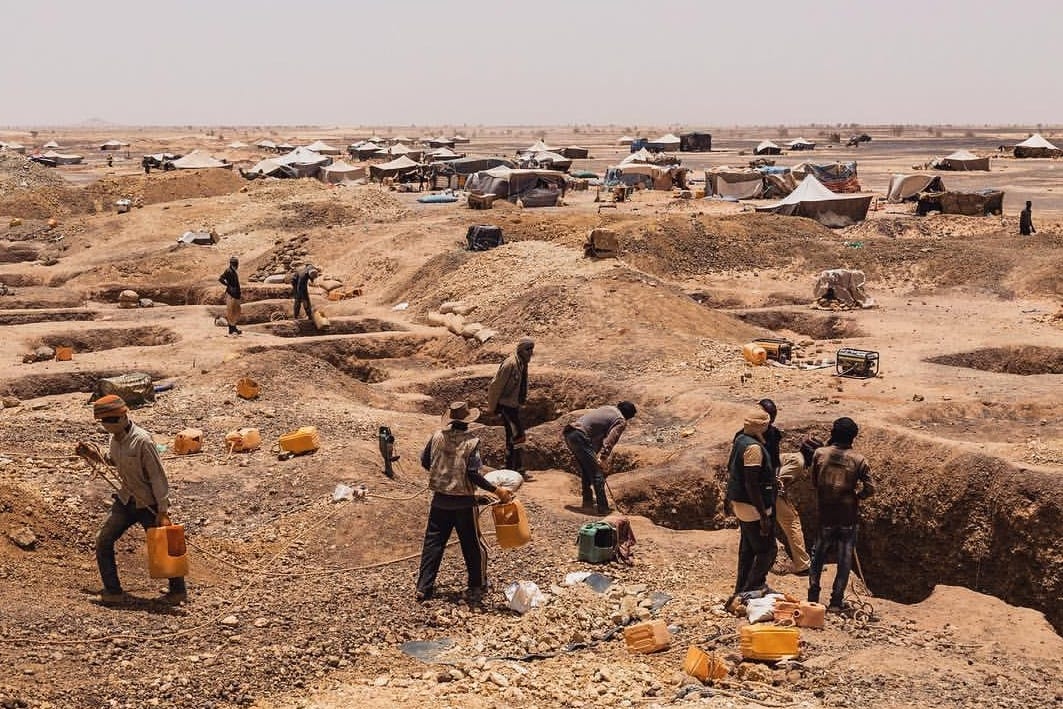

Hit the like button at the top or bottom of this page to like this entry. Use the share and/or re-stack buttons to share this across social media. Leave a comment if the mood strikes you to do so.
And please don't forget to subscribe if you haven't done so already!
By saying nothing meaningful and insisting we believe her, Harris is scheming to ride juvenile hubris to the White House.
Relieved at Biden's disappearance, Democrat crowds roar:
"She walks! She doesn't shake hands with air! She is the first of . . . so many things!"
Eye-candy. Sweet, but not good for US.